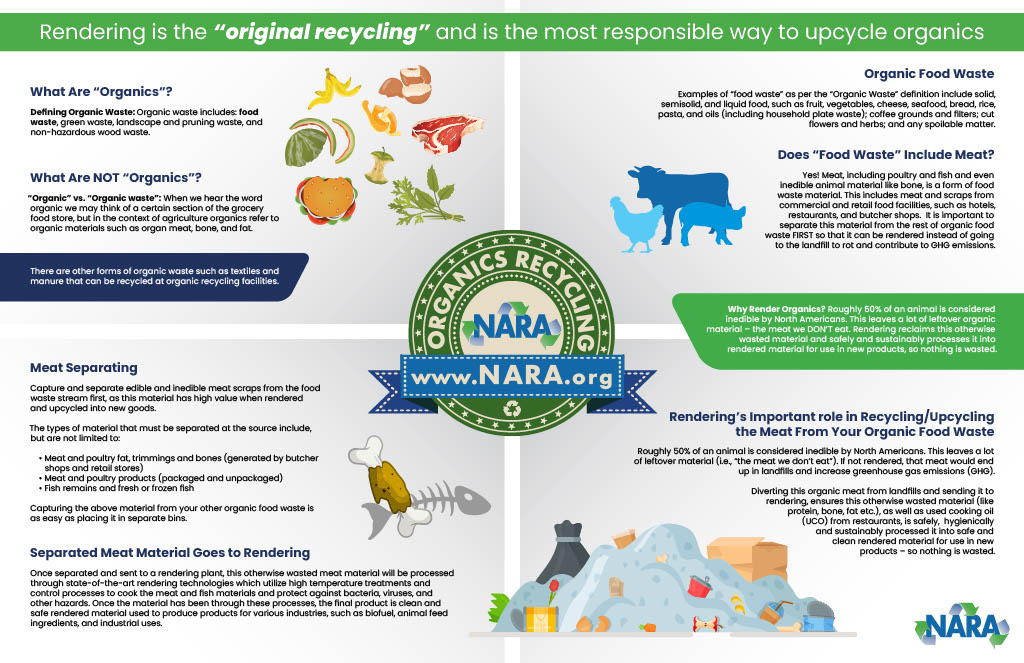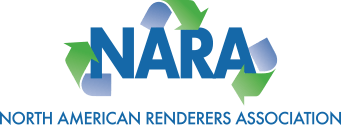On October 10th NARA issued a press release announcing a broad-reaching information campaign with the goal of educating on Organics Recycling and how including renderable material plays a critical role in sustainability.
The campaign includes a colorful and detailed infographic titled Organics Recycling: How Recycling Food Waste with Rendering Creates Value & Ensures Sustainability, which was designed be used as an educational tool for the public, and those in the government sector who may not be familiar with the rendering process and the sustainability and economic benefits of rendering organics.
The information campaign also includes a corresponding feature article in Render magazine’s October issue that delves deeper into the background of the project.
With the passing of Senate Bill 1383 in California in 2022 (which requires local governments to collect and recycle organic waste from commercial businesses, customers, and residents) NARA felt it was critical to release this information publicly; as hundreds of CA jurisdictions are required to comply, and similar initiatives are moving forward in in other parts of the U.S., particularly at the state level.
By providing this information in an easy to understand format, NARA is assisting those required to enforce these regulations, and educate local governments to help ensure that moving forward, organic materials like meat, bone, fat, etc. are being rendered instead of going to landfills.

About the Infographic:
The Organics Recycling infographic, which explains the definition of “organic” in this context (it isn’t the organic section of your local grocery store) details how including rendering in the recovery process for organic meat material ensures the highest and best use for this otherwise wasted material and allows that material to instead be upcycled to produce new, recycled goods such as biofuels, renewable fuels, biomass based diesel and many more.
The graphic also outlines a comprehensive step by step explanation of how our food waste can be treated and reduced by referencing current information from the EPA’s Food Recovery Hierarchy, and how rendering is an important step in that process to prevent enormous amounts of needless food waste, ensure sustainability, and create value.

